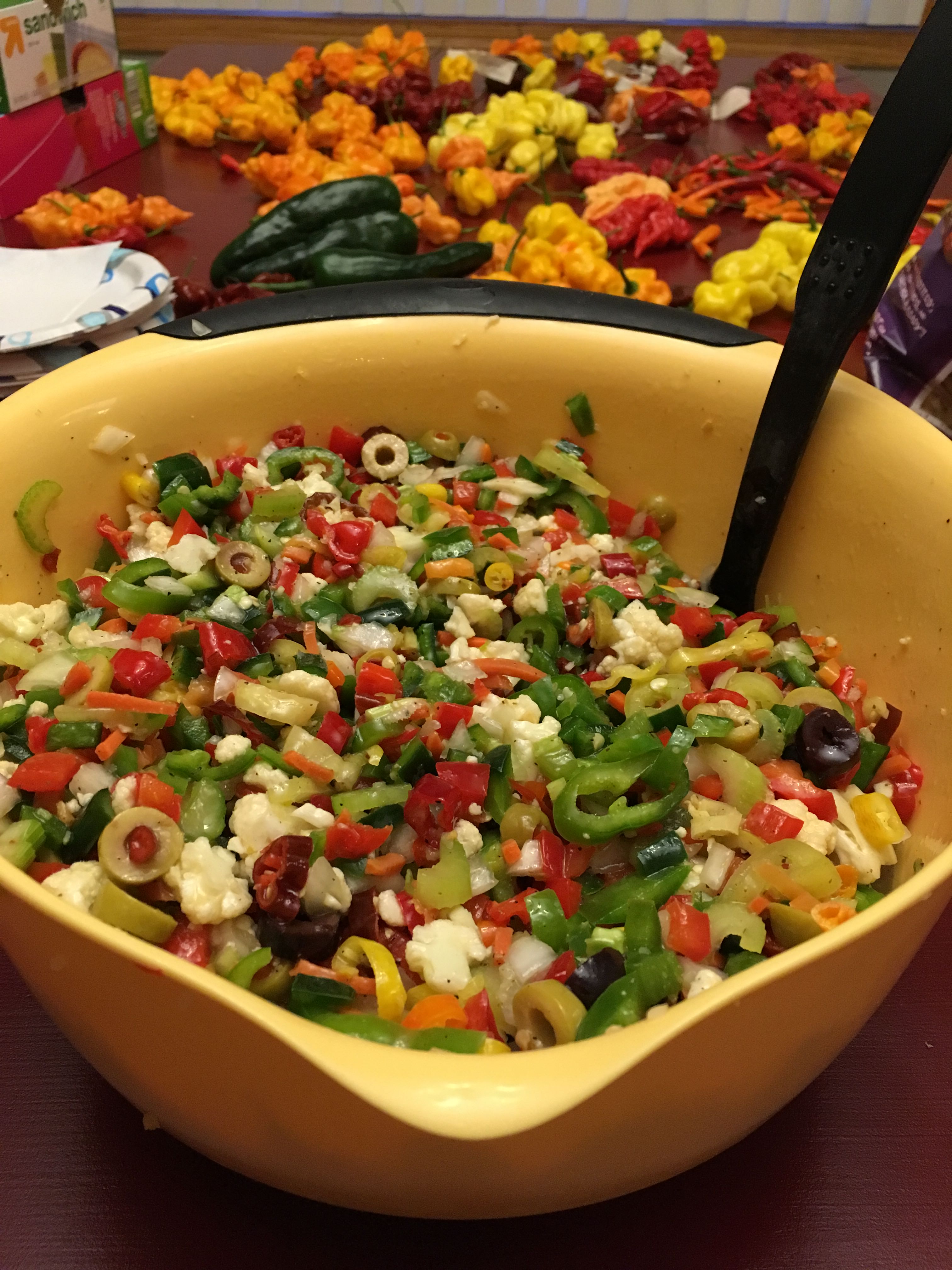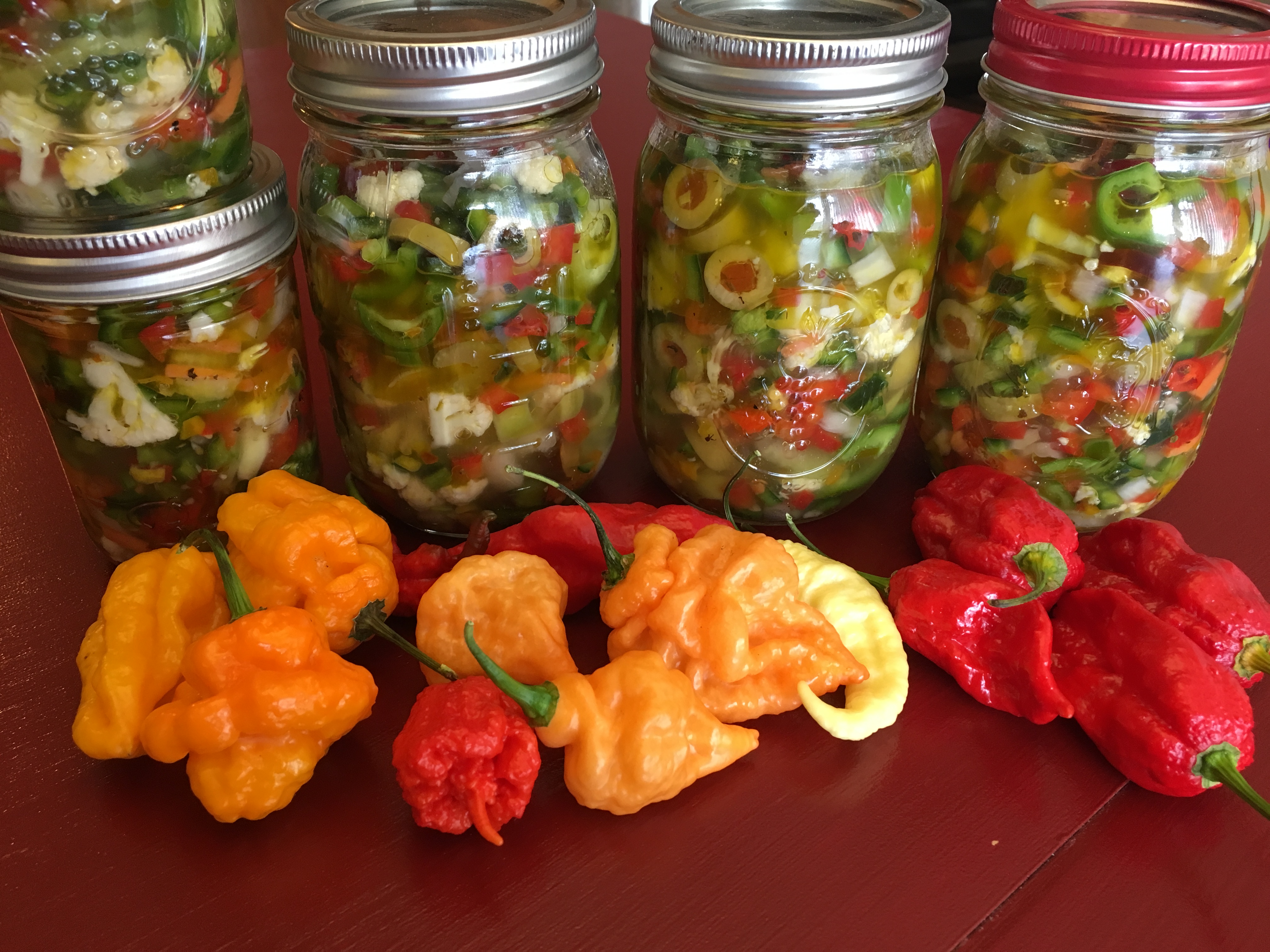Here's a tested recipe; no oil though
 http://ucanr.edu/sites/MFPOC/files/239033.pdf
http://ucanr.edu/sites/MFPOC/files/239033.pdf
Basic Fermented Giardiniera
from Ernest Miller of Rancho La Merced Provisions and a Master Food Preserver Will make approximately one quart
For the ferment:
4 ounces of carrots, peeled if desired, sliced on the diagonal, about 1/4 inch thick 4 ounces of celery, sliced on the diagonal, about 1/2 inch thick
1 bell pepper, any color or a mix, cut into batons
1 cup of bite-size cauliflower florets
1 clove of garlic, smashed
1/4 of an onion, sliced
1/2 to 1 jalapeños, sliced; remove seeds if desired, and use gloves to protect from the capsaicin 2 bay leaves
a sprig of thyme
Brine:
To make a 5% brine, dissolve 3 tablespoons salt into 1 quart of water. Or by weight, 1.6 ounces (or 45 grams) of salt per quart of water
Procedure:
1. Layer your vegetables into your fermentation vessel, such as a glass jar or fermentation crock. Pack firmly without crushing.
2. Add the brine to your fermentation vessel until the vegetable mixture is completely submerged. You may not need all the brine or you may need more, depending on how you packed the vegetables. If all of the vegetables do not fit in the jar on the first day, save them in the refrigerator and add them the next day as the original vegetables will soften and more vegetables will then fit in the jar.
3. Place a clean weight (4 ounce canning jar or ziplock bag filled with brine) in your fermentation vessel to keep the vegetable mixture submerged.
4. Cover your fermentation vessel with a lid that hasn't been completely sealed (to allow the escape of fermentation gasses). An airlock is recommended.
5. Store out of direct sunlight at room temperature for a minimum of four days and up to two weeks while fermentation takes place. The longer the fermentation, the more sour, tangy and tart the fermentation flavors. Check fermentation daily and remove any white film that appears around the top of the jar.
6. Refrigerate and enjoy! Fermented giardiniera should last several months in the refrigerator.
Caution: If your giardiniera becomes soft, slimy, grows mold, or develops a disagreeable odor, discard.
Note: Here is a list of other traditional vegetables you can use in giardiniera:
cucumbers (usually sliced), cornichons (usually whole), fennel, pearl onions, broccoli, romanesco, peppers (all sorts), runner beans, eggplant, green tomatoes, zucchini (all summer squash), and okra. Remember though, this is not an exhaustive or exclusive list. Cured green or black olives are also a traditional option for giardiniera, but I prefer to add my olives afterwards, since they are already fermented/cured.
A number of spices and herbs are also common additions to giardiniera, such as, peppercorns, fennel seed, mustard seed, celery seed, coriander, red pepper flakes, capers, dill, chervil and oregano.
Leafy greens do not work as well in this format. They are better treated like cabbage as for sauerkraut.
The Hot Pepper said:
.....and cut your cauliflower small, as the large whole florets to me are annoying...

Who says you're getting any?!







